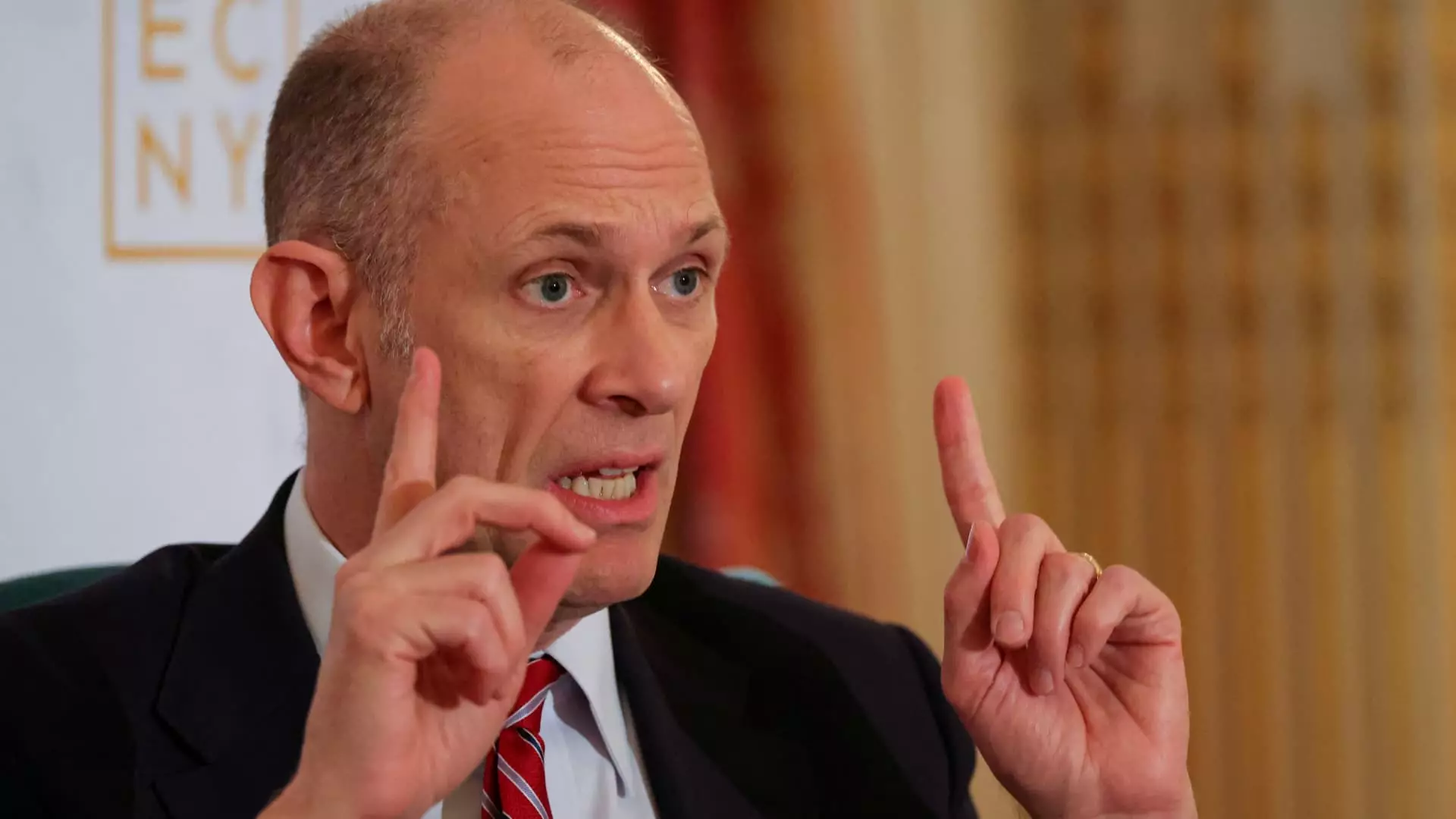The recent remarks from Austan Goolsbee, President of the Chicago Federal Reserve, shed light on the precarious intersection of trade policy and monetary regulation. As President Trump’s tariff threats reverberate through financial markets, it has become abundantly clear that these bold maneuvers have placed the Federal Reserve’s interest rate strategies in a state of gridlock. Goolsbee’s sentiment echoes the feelings of many economists: while a downward trajectory for interest rates appears possible, the ongoing turmoil in trade policy complicates any definite course of action. In this regard, we find ourselves standing on a rickety tightrope, precariously balancing economic growth against the daunting specter of stagflation.
The Tariff Tango: Markets in Turmoil
The President’s announcement of a staggering 50% tariff on European Union products, alongside a 25% tariff on iPhones imported from China, feels more like a reckless game of economic Russian roulette than a calculated fiscal strategy. What’s alarming is not just the immediate implications—heightened prices for consumers and added pressure on manufacturers like Apple—but the overarching instability that this creates within global markets. Investors respond to uncertainty like moths to a flame: they flee, leading to volatile market conditions that can significantly hinder economic resilience.
Goolsbee’s cautionary tone during his CNBC interview suggests that policymakers are acutely aware of the potential fallout from such aggressive tariff maneuvers. If the tariffs impose a stagflationary burden—a cocktail of stagnant growth and inflation—the consequences could be dire, particularly for those at the lowest rungs of the economic ladder. The prospect of “nationalistic” economic policies exacerbating income inequality should alarm anyone who cares about the fabric of our society, as those least capable of shouldering increased costs will invariably suffer the most.
Inflation: The Hidden Menace
The elephant in the room throughout this discourse is, of course, inflation. Goolsbee’s comments underscore a fundamental truth: no one relishes inflation, yet we find ourselves teetering on the edge of it. His assertion that the Federal Reserve will await greater clarity before responding further demonstrates a cautious approach that—while prudent—could inadvertently worsen the situation. As inflationary pressures mount from both tariffs and supply chain disruptions, one must question how much longer our economic framework can withstand these pressures without compelling the Fed into premature or overly aggressive rate cuts.
For many residents, a rise in everyday prices, whether from groceries or gadgets like the iPhone, is not merely a statistic; it is a daily reality. The psychological toll of inflation can erode consumer confidence, skewing spending habits and further destabilizing an already fragile economic environment. Liberal policymakers should vociferously advocate for strategies that mitigate these impacts, as the relentless push for tariffs may ultimately do more harm than good, augmenting prices and squeezing household budgets.
The Fed’s Tangled Web
As the Fed gears up for its next meeting, Goolsbee’s more tentative tone suggests that the central bank is finding itself ensnared in an intricate web of fiscal policy debates. The reality is that the Fed’s current monetary toolkit may not be well-equipped to navigate the persistent shocks brought on by erratic trade policy. While many financial analysts express hope for lower interest rates in the coming year, Goolsbee’s call for restraint makes it evident that the aim is to avoid any hasty decisions that could deepen economic malaise.
As Goolsbee continues to entangle himself in a gendered dance with uncertainty, the importance of clear and actionable trade policy cannot be overstated. When leaders take to the podium with threat-laden declarations, it sends ripples through economies that merit more than mere tolerance from the Federal Reserve; they require meaningful advocacy from policymakers who understand the delicate balance of growth and stability in the global marketplace.
Ultimately, the current economic climate evokes the classic play of chess—strategic moves are critical, but one misstep could lead to checkmate. As we witness this high-stakes dance between tariffs and interest rates, the imperative for coherent trade policy becomes clearer than ever. Decisions made in the coming weeks could very well shape the future economic landscape, and we must not lose sight of what truly matters: ensuring a thriving economy for all.

